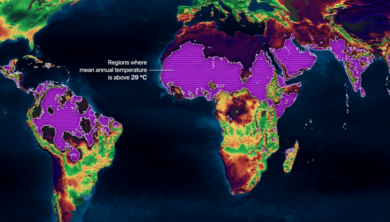The Middle East and North Africa (MENA) region stands at the forefront of climate change vulnerability, facing unprecedented challenges that demand urgent action. As we navigate through 2025, the need for robust climate adaptation strategies has never been more critical. Let’s explore the current state of climate adaptation in the MENA region, highlighting both the challenges and the promising steps being taken
The Climate Crisis in MENA
The MENA region is experiencing the harsh realities of climate change firsthand. Rising temperatures, prolonged droughts, and increasing water scarcity are putting immense pressure on the region’s resources and populations1. By 2050, in a 2°C global warming scenario, freshwater availability could plummet by 15-45%, potentially slashing GDP by 6-14%1.
Key Adaptation Challenges
Water Scarcity
As the world’s most water-scarce region, MENA faces critical challenges in water management. Countries like Morocco have seen droughts in 20 of the last 70 years, severely impacting agriculture and water resources1.
Coastal Vulnerabilities
With a significant portion of infrastructure and industry located in coastal zones, countries like Morocco are highly exposed to sea level rise. An estimated 75% of buildings and infrastructure in the MENA region are at direct risk from climate impacts1.
Agricultural Productivity
Climate variability is significantly impacting agricultural production across MENA countries. Studies show that a mere 1% increase in winter temperature can result in a 1.12% decrease in agricultural production1.
Adaptation Strategies in Action
Despite these challenges, MENA countries are taking significant steps towards climate resilience:
Water Management
Morocco, Jordan, and Tunisia have implemented improved water management practices, enhancing their resilience to prolonged droughts2. Morocco, for instance, has constructed 140 large dams since the 1980s and is exploring desalination programs1.
Renewable Energy Transition
Countries are actively working to reduce their carbon footprint. The United Arab Emirates and Qatar are investing in solar power projects, while Jordan is implementing fossil-fuel subsidy reforms2.
National Adaptation Plans (NAPs)
Countries across the region are developing comprehensive NAPs to identify medium and long-term adaptation needs based on the latest climate science4.
International Support
The World Bank has integrated climate considerations into all its work across the MENA region. Their MENA Climate Change Roadmap (2021-2025) focuses on key areas including food systems, water security, energy transition, and sustainable finance3.
The Road Ahead
While progress is being made, the MENA region remains the smallest recipient of global climate change finance. To bridge this gap and enhance resilience, several key actions are necessary:
- Increased investment in climate adaptation, estimated at up to 4% of GDP annually2.
- Strengthening institutional arrangements and legal frameworks for climate action6.
- Expanding green spaces and improving management of solid waste, water, and wastewater8.
- Enhancing regional cooperation and knowledge sharing on climate adaptation strategies.
As we move forward, it’s clear that climate adaptation is not just an environmental imperative but a crucial factor for economic stability and social well-being in the MENA region. By embracing innovative solutions and fostering international collaboration, the region can build a more resilient and sustainable future in the face of climate change.

